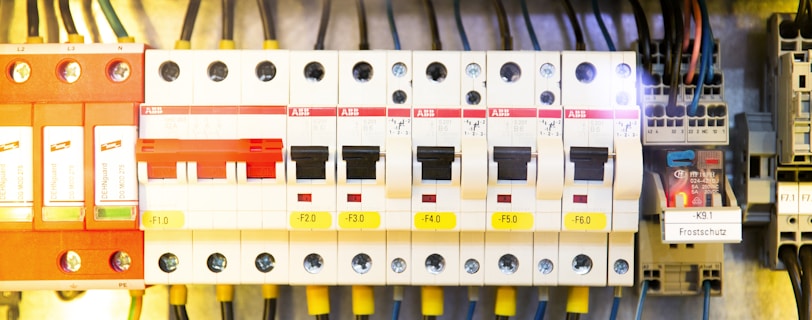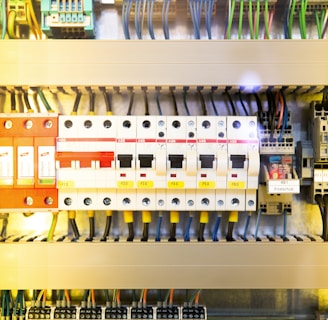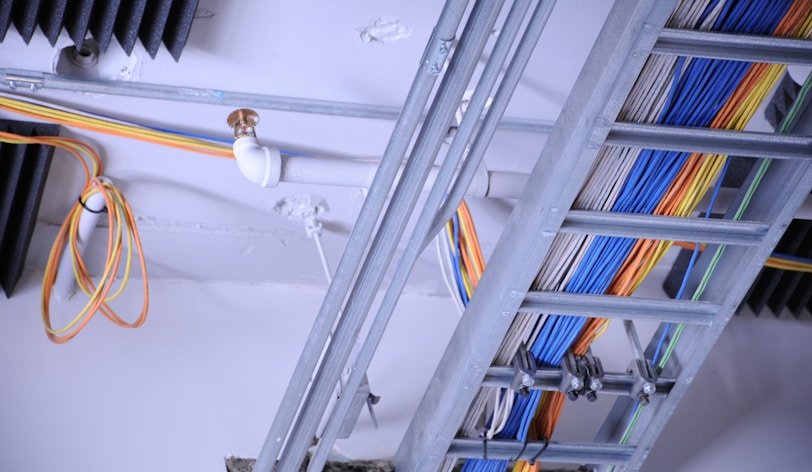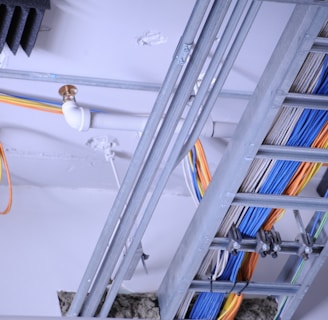Rooftop Wind Turbines: Guide and Products
Essentials of DIY rooftop wind turbines, covering design choices, installation tips, and product insights for anyone looking to harness wind energy at home.
WIND GUIDE
7 min read


Highlighting real-world products that cater to DIY enthusiasts, we navigate through the complexities of selecting, mounting, and maintaining rooftop wind energy systems. From understanding wind turbine blade dynamics to selecting the right product for your home, this article aims to equip readers with the knowledge needed to successfully harness wind energy, emphasizing efficiency, safety, and sustainability.
"...blade design of a wind turbine is a critical factor that significantly influences its efficiency."
DIY Rooftop Wind Turbines
The blade design of a wind turbine is a critical factor that significantly influences its efficiency and output. Blades are meticulously engineered to capture wind energy and convert it into rotational force, driving the turbine's generator to produce electricity. The aerodynamics of blade design involves a complex interplay of factors such as shape, material, length, and angle of attack, each tailored to optimize wind capture and minimize resistance. Innovations in composite materials have enabled lighter, stronger blades capable of operating efficiently in a wider range of wind speeds, thus enhancing the overall performance of rooftop wind turbines.
Recent advancements have led to the development of blades that incorporate aerodynamic profiles similar to those found in aircraft wings, which are designed to maximize lift while reducing drag. This approach allows for the extraction of a greater amount of energy from available wind, especially in urban or suburban environments where wind patterns can be erratic and less predictable. Furthermore, the integration of active control technologies enables blades to adjust their orientation in response to wind speed and direction changes, ensuring optimal performance under varying conditions. Such technical enhancements are pivotal in making rooftop wind turbines a viable and productive component of home energy systems.
Choosing the appropriate wind turbine for residential rooftop installation involves a multifaceted analysis of several critical criteria. First and foremost, the wind turbine's size and power output must be compatible with the structural capabilities of the building and the energy needs of the household. It's essential to assess the average wind speed in the area, as this directly influences the choice of turbine size and design for optimal energy production. Additionally, considerations of noise levels and vibration are paramount, given the close proximity to living spaces, necessitating turbines designed with noise reduction technologies and vibration dampening mounts.
Local zoning and building codes also play a significant role in the selection process, dictating specific requirements for height, setback, and safety features. These regulations ensure that the installation of a rooftop wind turbine does not pose risks to the occupants or surrounding properties. Evaluating these technical and regulatory factors requires thorough research and possibly consultation with professionals in wind energy systems. This comprehensive approach ensures that homeowners not only comply with local standards but also maximize their investment in renewable energy by selecting a turbine that is both efficient and suitable for their specific situation.
We Recommend This Rooftop Wind Rotor Kit
Installing a rooftop wind turbine is a complex process that requires careful planning and adherence to technical guidelines to ensure safety and maximize efficiency. Before the physical installation, a thorough assessment of the roof's structural integrity is crucial to determine its capability to support the turbine's weight and operational stresses. This evaluation should include considerations for wind load, vibration, and dynamic forces that could affect the building. Additionally, securing necessary permits and ensuring compliance with local regulations and codes is an essential step that precedes the installation process, as it helps in avoiding legal issues and ensuring the system's integrity.
The installation process of a rooftop wind turbine involves several key steps:
Site Assessment: Conduct a detailed wind assessment to identify the optimal location for the turbine on the roof. This step ensures the turbine will operate under the best possible wind conditions, maximizing energy production.
Structural Evaluation: Engage a structural engineer to evaluate the roof’s ability to withstand the additional load of the turbine and its operational forces. This assessment is crucial for ensuring the long-term safety and stability of the installation.
Permit Acquisition: Obtain all necessary permits and approvals from local authorities. This ensures compliance with local building codes and zoning regulations, preventing future legal complications.
Foundation and Mounting: Install a sturdy foundation or mounting system designed to absorb vibrations and distribute the turbine's load evenly across the roof structure. The foundation should be anchored securely to prevent any movement that could lead to damage.
Electrical Integration: Connect the turbine to the home’s electrical system, incorporating appropriate inverters and safety switches. This step must be performed by a certified electrician to ensure the system is safe and compliant with electrical codes.
Safety Checks: Conduct thorough safety checks and inspections to ensure the turbine and its installation meet all safety standards. This includes checking for secure fastenings, proper electrical connections, and the absence of any structural risks.
Commissioning: Finally, the turbine is commissioned and tested to verify its operational efficiency. This process includes monitoring the system’s performance and making any necessary adjustments to optimize energy production.
To ensure the long-term success and safety of a rooftop wind turbine installation, adhering to best practices in system optimization and risk mitigation is essential:
Regular Maintenance and Inspection: Schedule regular maintenance checks and inspections to identify and address wear and tear, ensuring the turbine operates efficiently and safely. Preventative maintenance can significantly extend the lifespan of the system and prevent costly repairs.
Monitor and Optimize Energy Use: Implement energy monitoring systems to track the turbine’s output and your home’s energy consumption. This data can help optimize the use of wind energy, integrating it effectively with other energy sources and reducing reliance on the grid.
Emergency Preparedness: Establish emergency procedures and install safety devices, such as brake systems and electrical disconnects, to protect the turbine and your home in extreme weather conditions or in the event of a malfunction. Being prepared for emergencies can significantly reduce the risk of damage and ensure the safety of occupants.
Optimizing Performance and Mitigating Risks
The Technicalities of Installing a Rooftop Wind Turbine
Selecting the Right Wind Turbine for Your Rooftop
Wind Turbine Blade Design and Aerodynamics


Roof Wind Turbines on Amazon
System Wiring and Configuration for Optimal Performance
The electrical configuration of a rooftop wind turbine system is pivotal in translating wind energy into usable power for a home. This process involves meticulous wiring, the integration of a battery bank for energy storage, and the incorporation of an inverter to convert generated DC power into AC power compatible with household appliances. The choice of inverter is critical, as it must match the turbine's output capacity and the home's energy requirements. Additionally, the system should include a charge controller to regulate the flow of electricity from the turbine to the battery bank, preventing overcharging and potential battery damage. This setup ensures a steady and reliable supply of electricity, even when wind conditions are variable or insufficient to meet immediate energy demands.
Moreover, the configuration must prioritize safety and efficiency, incorporating proper grounding, surge protection, and an emergency shutdown mechanism to safeguard against electrical hazards and system malfunctions. The complexity of wiring and component integration demands a thorough understanding of electrical systems and adherence to national and local electrical codes. Integrating remote monitoring tools can also provide valuable insights into system performance, allowing for real-time adjustments and predictive maintenance. Ultimately, the precision in system wiring and configuration lays the foundation for a reliable, efficient, and safe renewable energy solution that maximizes the potential of wind power on a residential scale.


For our Artice on Using or Getting a Solar Generator
If Interested in Maximizing Solar Electric Efficiency
Evaluating and Selecting a Rooftop Wind Turbine
Choosing the right rooftop wind turbine involves a comprehensive evaluation of several key factors to ensure the system meets the specific energy needs and environmental conditions of a home. The selection process should begin with an assessment of wind resource availability, taking into account local wind speed patterns and potential obstructions that could affect turbine performance. The turbine's rated capacity, efficiency at converting wind to electrical energy, and noise levels are critical performance metrics to consider. Comparing these metrics across different models helps identify the most suitable option for a particular setting. Additionally, the turbine's durability and warranty offer insights into its expected lifespan and manufacturer confidence in the product. This comparative analysis, combined with an understanding of the installation site's specific requirements and constraints, enables homeowners to make an informed decision that balances cost, performance, and long-term reliability in harnessing wind energy for residential use.
In conclusion, the journey to harnessing wind energy through a rooftop turbine system involves meticulous planning, technical understanding, and adherence to best practices. From evaluating the feasibility of installing a wind turbine on your roof to selecting the right equipment based on blade design, solar integration, and foundational requirements, each step is crucial for optimizing performance and sustainability. The installation process, underscored by precision in system wiring and configuration, demands a detailed approach to ensure safety, efficiency, and reliability. As we've explored the technical nuances and practical applications of rooftop wind turbines, it becomes clear that with the right preparation and equipment, homeowners can significantly contribute to a greener future. The final recommendation is to conduct thorough research, consider the local environment, and consult with professionals to ensure that your investment in wind energy is fruitful, sustainable, and aligned with your energy goals.


We Recommend This Roof Wind Turbine Kit
To support our work, we may earn a commission when you buy through links on our site. As an Amazon Associate, I earn from qualifying purchases.
DIY GEAR
DIY GEAR
Cookie Notice: Our website uses cookies to enhance your browsing experience. By continuing to use our site, you agree to our use of cookies. If you wish to manage your cookie preferences, you may do so in your browser settings.
To support our work, we may earn a commission when you buy through links on our site. As an Amazon Associate, I earn from qualifying purchases.This page may contain affiliate links, which means if you click through and make a purchase, we may receive a commission at no additional cost to you. This helps support our research and editorial team.




